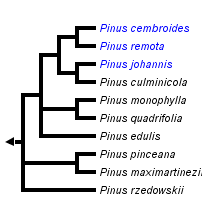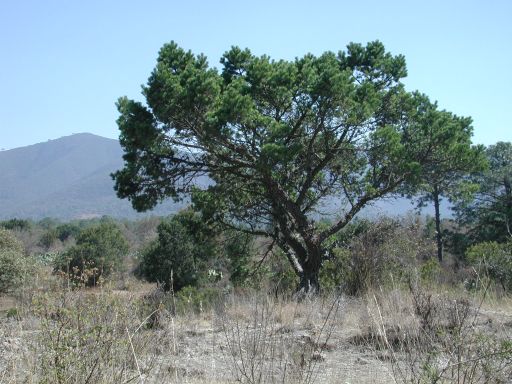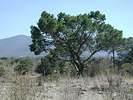subsection Cembroides



This tree diagram shows the relationships between several groups of organisms.
The root of the current tree connects the organisms featured in this tree to their containing group and the rest of the Tree of Life. The basal branching point in the tree represents the ancestor of the other groups in the tree. This ancestor diversified over time into several descendent subgroups, which are represented as internal nodes and terminal taxa to the right.

You can click on the root to travel down the Tree of Life all the way to the root of all Life, and you can click on the names of descendent subgroups to travel up the Tree of Life all the way to individual species.
For more information on ToL tree formatting, please see Interpreting the Tree or Classification. To learn more about phylogenetic trees, please visit our Phylogenetic Biology pages.
close boxIntroduction
Most of the North American pinyon pines are species of Pinus subsection Cembroides. This group of pines are distributed from the western United States to south-central Mexico. The species are recognizable for adaptations for bird dispersal, notably enlarged, functionally wingless seeds with a hardened integument. Other pine subsections (Nelsoniae, Strobus, and Pinaster) also have wingless seeds, so this character is not diagnostic for the group. Furthermore, the rare Mexican endemic, P. rzedowskii is also in subsection Cembroides, although it has small, winged, wind-dispersed seeds as in most other pines.
References
Farjon, A. & Styles, B. T. 1997. Pinus (Pinaceae). Flora Neotropica Monograph 75. The New York Botanical Garden, New York.
Gernandt, D. S., A. Liston, and D. Piņero. 2001. Variation in the nrDNA ITS of Pinus subsection Cembroides: implications for molecular systematic studies of pine species complexes. Molec. Phyl. Evol. 21:449-467.
Gernandt, D. S., A. Liston and D. Piņero. 2003. Phylogenetics of Pinus subsections Cembroides and Nelsoniae inferred from cpDNA sequences. Syst. Bot. 28:657-673.
Liston, A., D. S. Gernandt, T. F. Vining, C. S. Campbell and D. Piņero. 2003. Molecular phylogeny of Pinaceae and Pinus. Pp. 107-114 in Mill, R. R. (ed.), Proceedings of the International Conifer Conference. Acta Hort. No. 615, International Society for Horticultural Science, Brugge.
Malusa, J. 1992. Phylogeny and biogeography of the pinyon pines (Pinus subsect. Cembroides). Syst. Bot. 17:42-66.
Title Illustrations

| Scientific Name | Pinus cembroides subspecies orizabensis |
|---|---|
| Location | Puebla-Veracruz border, Mexico |
| Specimen Condition | Live Specimen |
| Body Part | tree |
| Copyright |
© 2004 David S. Gernandt

|
About This Page
Page copyright © 2005
All Rights Reserved.
- First online 12 January 2005
Citing this page:
Tree of Life Web Project. 2005. subsection Cembroides. Version 12 January 2005 (under construction). http://tolweb.org/subsection_Cembroides/27769/2005.01.12 in The Tree of Life Web Project, http://tolweb.org/







 Go to quick links
Go to quick search
Go to navigation for this section of the ToL site
Go to detailed links for the ToL site
Go to quick links
Go to quick search
Go to navigation for this section of the ToL site
Go to detailed links for the ToL site